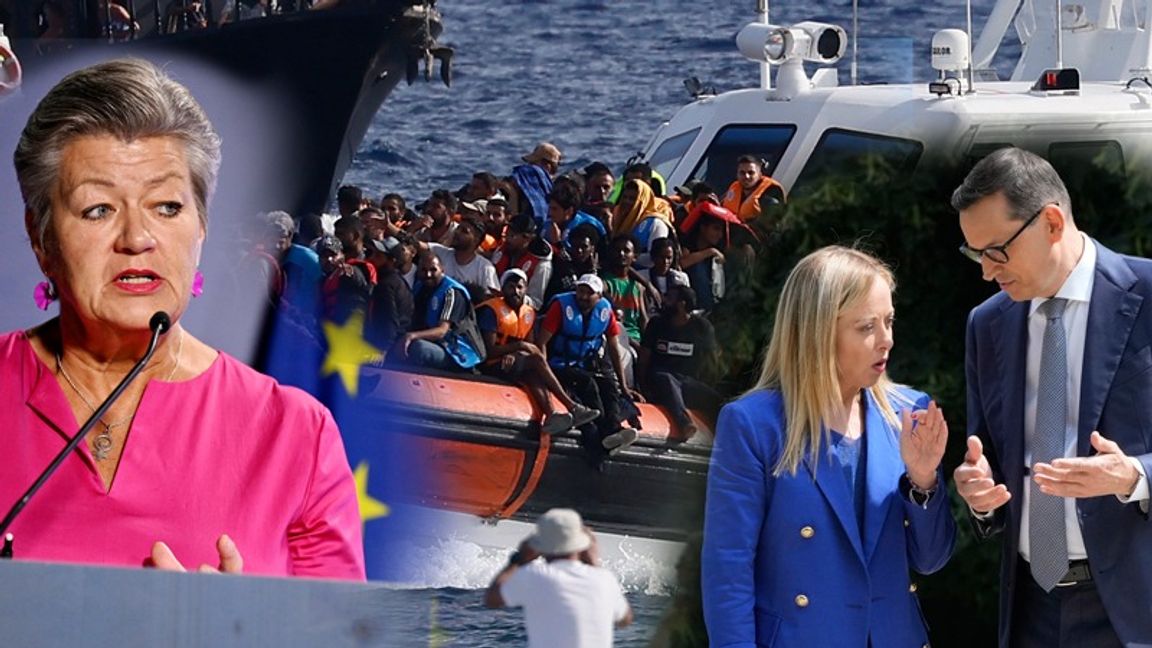For several years, the European Union has been working to develop a common migration policy, or migration pact. This summer, it looked as if a settlement had been reached that meant, in short:
• That all migrants will still be allowed to apply for asylum in the EU if they gain entry
• Asylum examination will be conducted in the EU (an alternative proposal was for all asylum cases to be examined in an African country far from the EU)
• Migrants who have been granted asylum will be redistributed between countries based on different quotas
• Countries can buy their way out of the quota
However, during the summer, the influx of boat migrants to Italy and specifically the island of Lampedusa reached record levels. It has prompted many countries – such as Italy and Poland – to pull the handbrake.
German involvement
In addition, when information emerged that Germany was sponsoring relief organizations that assist and pick up African boat migrants, it caused Italian Prime Minister Giorgia Meloni to become angry and demand an explanation from the Germans.
Italy requires, in exceptional cases such as the current situation, that migrants be returned to Africa without trying their right to asylum.
They also want to be able to classify aid organizations that pick up migrants as political tools – or “psychological operations” – to “destabilize” Italy. This would give Italy the opportunity to take police and legal action against people who were on board aid organisations’ boats.
Yellow boats
And from Sweden, the former Swedish Maritime Association and the media group Schipsted (Aftonbladet and Svenska Dagbladet) sent so-called yellow boats (2016) that picked up migrants on their way to the European Union. Today business is closed.
In the negotiations, Spain put forward proposals that would further tighten the migration agreement.
Among other things, it offers possibilities to keep migrants detained in migration camps for an additional eight weeks in addition to the eighteen months already proposed. The rules regarding who is entitled to asylum have also been tightened.
But the tightening does not seem to be enough for Italy, which threatens to use its veto power.
“Trust us”
Despite Italy’s objections, according to the EU Commissioner responsible for migration, social democrat Ylva Johansson, “there are no major obstacles” to an agreement that all EU countries can agree to. El Pais.
“You simply have to trust us,” Ylva Johansson said at a press conference.
Germany has previously threatened to block the migration agreement because it is too strict and covers too few asylum migrants.
In the first half of the year, the European Union received more than half a million asylum applications. This was before the surge in boat migrants to Italy, Greece and Spain.
Ylva Johansson’s statement contradicts Polish Prime Minister Mateusz Morawiecki.
– Mateusz Morawiecki said on Polish TV: I will go to the European Council next week where I will retain the veto power against illegal immigration.
Morawiecki said: – This is an attempt not only to attack the sovereignty of Poland and other member states, but also an attempt to destabilize the European Union in an undemocratic way.
Morawiecki represents Poland’s ruling Law and Justice party. PiS has long described itself as having a strict immigration policy.
But PiS is now under pressure ahead of the Polish elections after it was revealed how people linked to the party sold hundreds of thousands of work visas to Africans and Asians in recent years.
Swedish Immigration Minister Maria Malmer Stenergaard (centre) said this this week Swedish daily newspaper She is optimistic that a compromise will be reached.

“Unapologetic writer. Bacon enthusiast. Introvert. Evil troublemaker. Friend of animals everywhere.”







More Stories
More than 100 Republicans rule: Trump is unfit | World
Summer in P1 with Margrethe Vestager
Huge asteroid approaching Earth | World